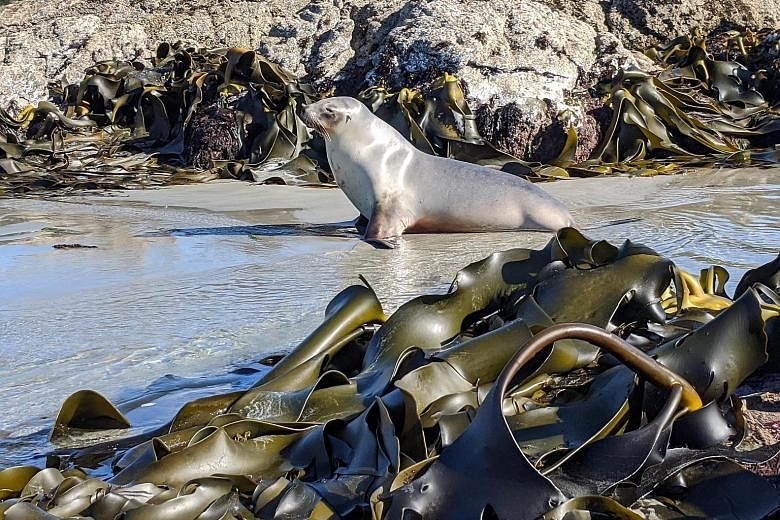Hidden in the genes of seaweed may be evidence of the planet's past geological violence.
Researchers say that the genes of bull kelp along the shore of New Zealand's South Island bear marks of an earthquake that occurred 800 years ago, when part of the ocean floor rose upward and wiped out its inhabitants.
That made way for newcomers of a different genetic background, the ancestors of today's kelp. The finding suggests that moments of cataclysmic change in an environment can be revealed by comparing genes across populations of some organisms.
New Zealand lies atop a nest of fault lines. After a quake four years ago, the edge of a fault near the town of Kaikoura shot more than 1.8m out of the water, and zoology professor Jon Waters at University of Otago, and his colleagues, began to wonder what happened to kelp after such destruction.
Those stranded above the high tide line die swiftly, but as the ecosystem below the water shifts into a new normal, there is suddenly a lot of free real estate, where new individuals can sweep in and take over. And because of the way that a population of kelp carpets an area for the long term and makes little room for new arrivals, Professor Waters said, the algae provided an ideal test bed for seeing whether a disaster's effects on the gene pool persist over time.
The scientists took samples of kelp along a 97km stretch of the coastline near Dunedin, where a similar quake happened about 800 years ago. Individual kelp looked much the same but when the scientists examined the genetics, there were large differences linked to where the kelp had been collected. Bull kelp that lived along a 24km stretch that had been forced into the air during that long-ago earthquake were distinct from their neighbours of the same species on either side, whose homes had long lain undisturbed.
"We were just gobsmacked," Prof Waters said. "We could see where the uplift zone was just by looking at the genetics."
When wandering bull kelp from farther down the coast arrived at the wasteland left by the quake, they likely proliferated swiftly, dominating the entire footprint of the uplifted area within a few decades, before any others could get in. Their descendants are still living there. Their presence is a sign of an ancient disruption but also of renewal.
"One of the things we learnt from this is how quickly nature recovers," Prof Waters said. "It's reassuring that nature has that power."
The work corroborates the idea that after ecosystems recover from catastrophes, the genetic make-up of the organisms there can bear signatures of the change for hundreds of years or longer.
NYTIMES

